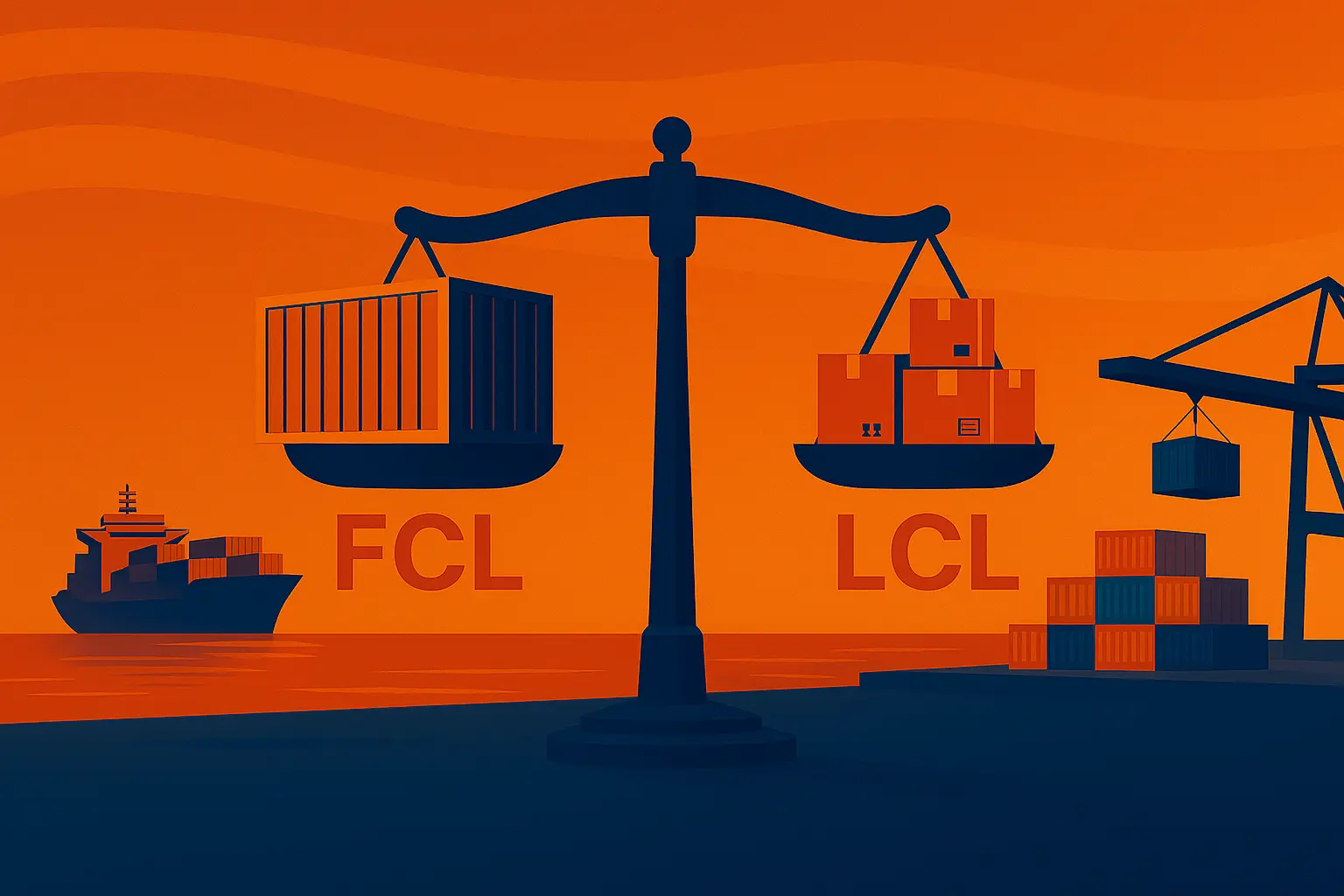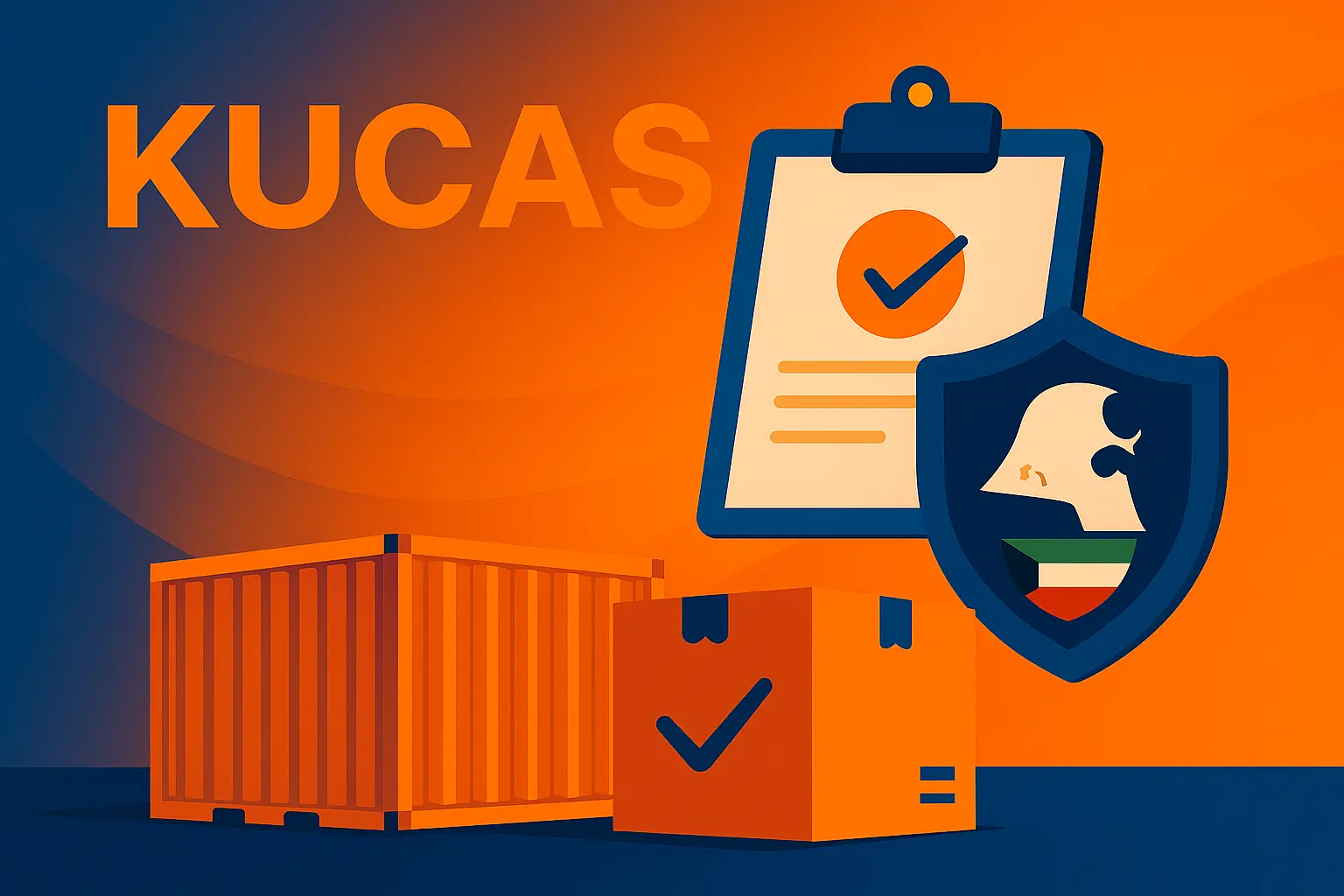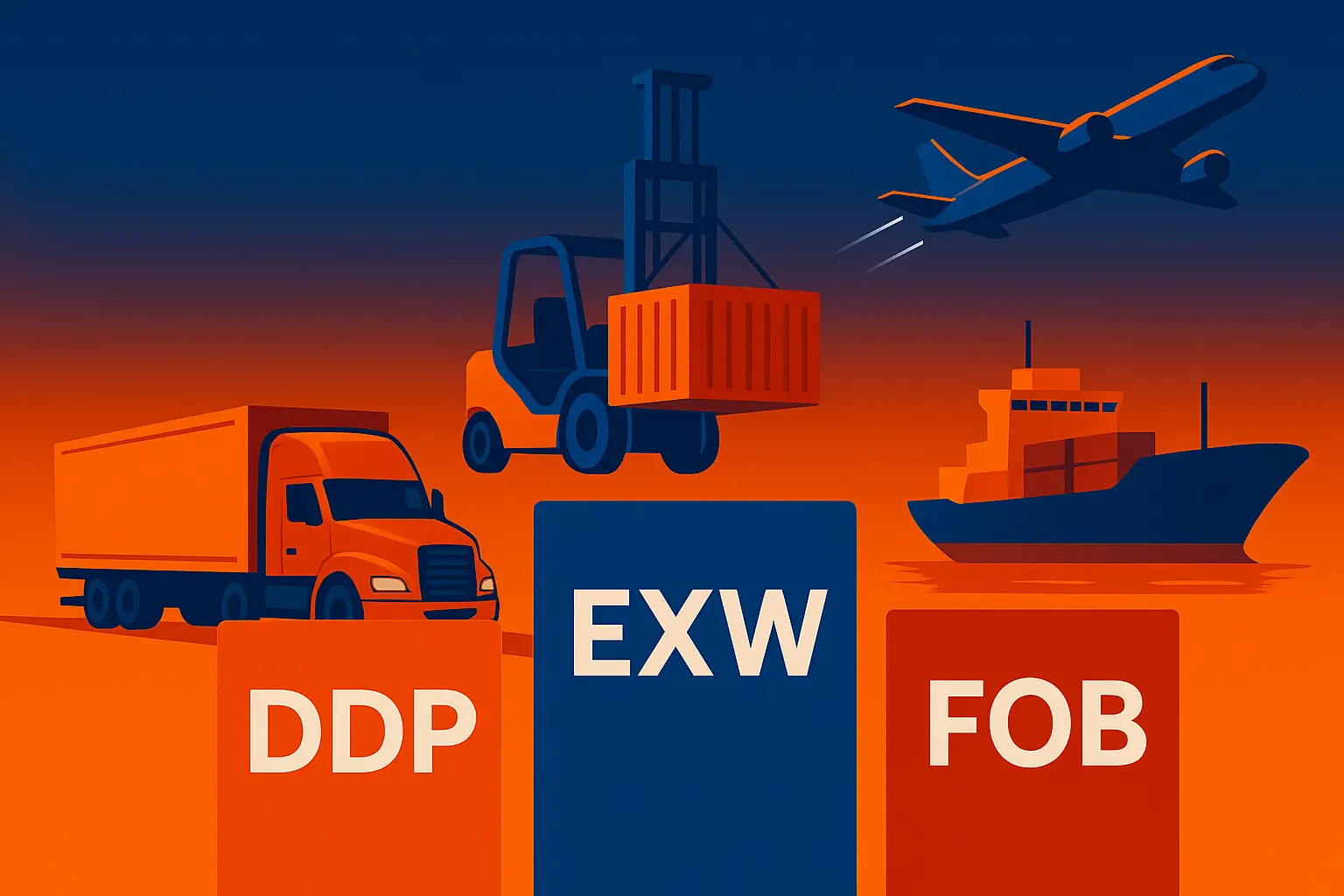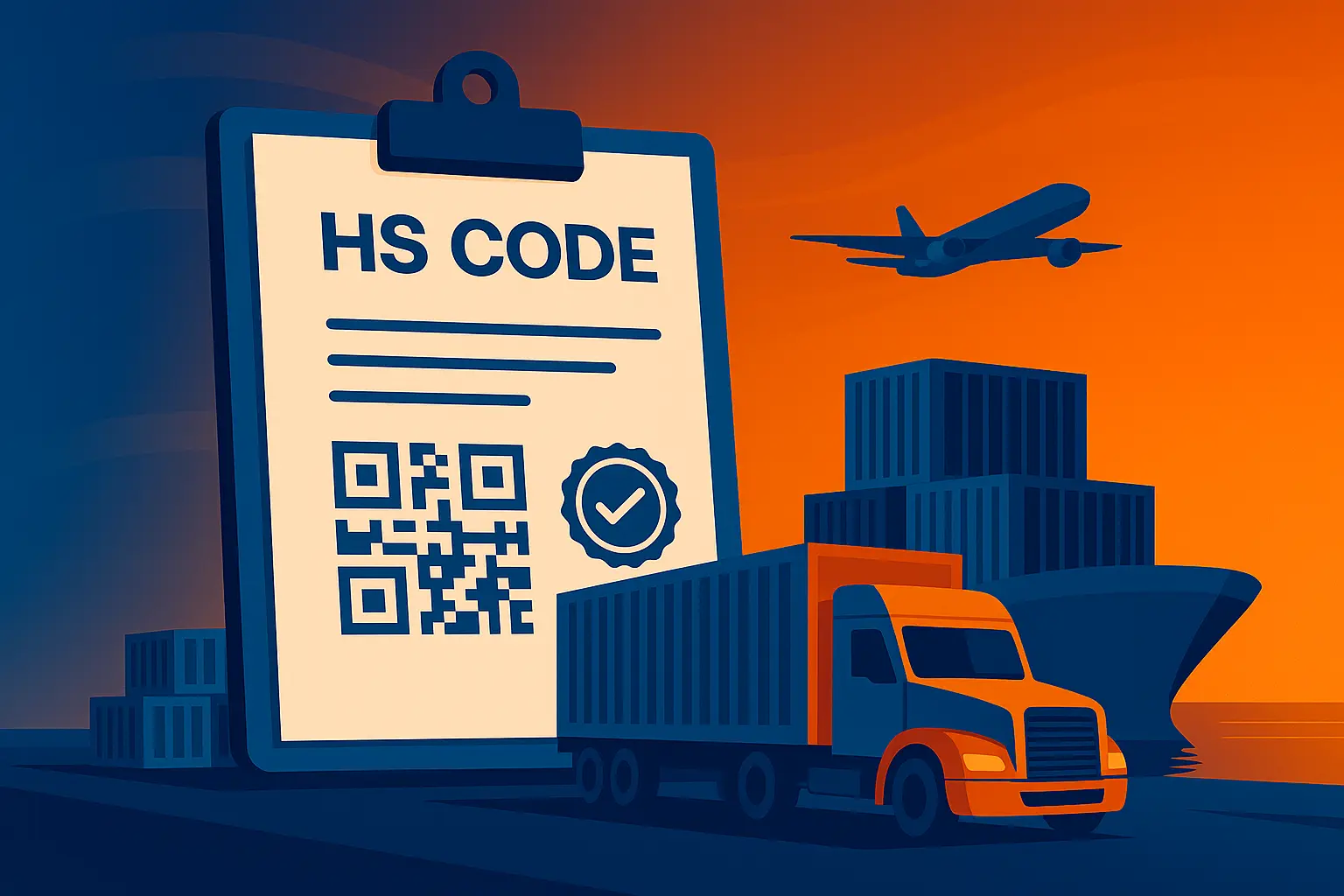Introduction
Choosing the ocean freight mode directly affects transit time, total landed cost, and risk. The two most common options are Full Container Load and Less than Container Load. This guide explains the differences precisely, when to choose each option, how costs are calculated, and what to watch for in paperwork, packing, and handling risks—with practical examples and quick decision tables.
First: Quick definitions
- Full Container Load: you book a full container (20-foot, 40-foot, or high cube) exclusively for your cargo; the container remains sealed in your name from loading port to discharge.
- Less than Container Load: your cargo moves inside a shared container with other customers. A freight forwarder or consolidator combines multiple shipments and issues a House Bill of Lading for each shipment.
Second: When to choose Full Container Load
Choose Full Container Load when your volume approaches a full container (around 18–20 cubic metres for a 20-foot container as a practical threshold), the goods are sensitive to handling, you want fewer touch points, you need clearer schedules, or you have compliance or documentation constraints best managed in a dedicated container.
Advantages
- Lower exposure to damage or loss due to fewer handling points.
- Clear and often shorter end-to-end transit time.
- Full control over internal loading and bracing.
- Lower unit cost when you utilize most of the container volume.
Considerations
- Higher fixed cost if the shipment is small.
- Storage and equipment charges may rise if gate-out is delayed.
- Plan for receiving a full container at destination (space and equipment).
Third: When to choose Less than Container Load
Choose Less than Container Load when the volume is small or medium (for example one to fifteen cubic metres), you ship frequently in small batches, you need flexibility to send partial orders, or you lack facilities to receive a full container.
Advantages
- Pay by actual volume under the weight-or-measure rule (ocean freight commonly on cubic metres).
- Suitable for trial orders and market entry.
- No need to arrange full-container unloading.
Considerations
- Extra time for consolidation before sailing and deconsolidation after arrival.
- More touch points, which slightly raises damage or partial loss probability.
- Additional destination fees (consolidation facilities, handling, and documentation) may increase real landed cost.
- Earlier cut-off dates at the consolidation warehouse.
Fourth: How costs work (practical view)
Full Container Load
- Container ocean freight plus origin and destination port charges, surcharges, and inland haulage.
- Cost is largely fixed per container within legal weight limits; unit cost drops as utilization increases.
Less than Container Load
- Pricing by cubic metre (with a minimum), plus consolidation facility charges at origin and destination, documentation, and handling.
- Watch hidden destination charges that can make Less than Container Load more expensive at mid volumes.
Quick calculation tip: if your Less than Container Load total approaches a comparable Full Container Load rate, compare transit-time and risk; a Full Container Load may be superior. Consider combining two smaller orders into one Full Container Load when cash flow and storage allow.
Fifth: Supply chain timing
- Full Container Load: typically shorter because no consolidation or deconsolidation steps.
- Less than Container Load: add time at both ends, especially during peak seasons.
Sixth: Packing
- Full Container Load: you control palletizing, blocking and bracing; add dunnage and anti-shift measures for heavy goods.
- Less than Container Load: use standard cartons and pallets, reinforce corners, design for vibration, and label each package clearly.
Seventh: Paperwork and practical differences
- Both require commercial invoice, packing list, certificate of origin when needed, and an ocean transport document.
- Full Container Load: often a Master Bill of Lading issued in your name, or a House and Master combination.
- Less than Container Load: you work with a House Bill of Lading tied to a Master Bill of Lading; keep both references for tracking.
Eighth: Risks and how to manage them
- Damage or loss: relatively higher in Less than Container Load due to multiple handling points; mitigate with robust packing and appropriate cargo insurance.
- Delays: sensitivity to third-party schedules at the consolidation facility; choose providers with reliable records.
- Unexpected charges: validate destination cost sheets in advance.
Ninth: Quick decision rules
Choose Full Container Load if: volume is around 18–20 cubic metres for a 20-foot container or around 28–30 cubic metres for a 40-foot container (subject to actual rates), goods are sensitive, or you need fewer touch points and tighter control.
Choose Less than Container Load if: volume is small or variable, you ship exploratory or frequent small orders, or you cannot receive a full container at destination.
Tenth: Incoterms impact
- Ex Works or Free Carrier: rely earlier on the logistics provider to manage consolidation; planning matters for Less than Container Load.
- Free on Board, Cost and Freight, or Cost Insurance and Freight: watch who controls booking and cut-off alignment at the consolidation facility.
- Delivered at Place or Delivered Duty Paid: expect more destination responsibilities; Less than Container Load may add storage stops.
Eleventh: Mini case study
A company imports spare parts totalling twelve cubic metres and three tonnes monthly. Option one is Less than Container Load with consolidation fees and total of thirty to thirty-five days door-to-door. Option two is a Full Container Load every two months by combining two cycles, with twenty-five to twenty-eight days and lower unit cost if storage and cash flow allow.
Frequently asked questions
Can I switch from Less than Container Load to Full Container Load at the last minute?
Possible in theory but expect extra costs and rebooking; decide before cut-off.
Does container weight matter?
Yes. Respect legal road and ocean limits; overweight leads to penalties and extra cost.
Why do I see extra consolidation facility fees at destination?
Because your cargo is unpacked and processed at the facility; these are separate from ocean freight.
Is Full Container Load always faster?
Often yes, but it depends on sailing schedules and how quickly you gate-out after arrival.




